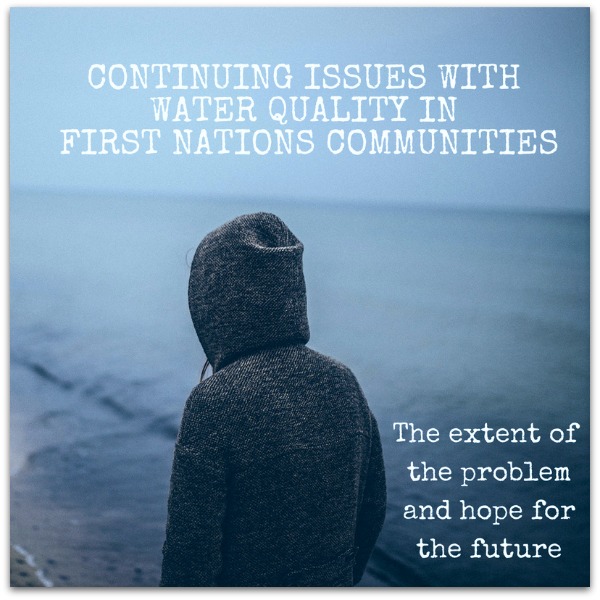
Recently, the United Nations has called on Canada to address problems with drinking water in aboriginal communities. In 2005, a Canadian government report acknowledged that First Nations people living on reserves did not have the same access to drinkable water as other Canadians – and, over a decade later, this is still the case. First Nations women from communities across Ontario have travelled to the UN in Geneva to tell the story of the poor water conditions in their homes. Following this, the UN Committee on Economic, Social and Cultural Rights released a review of Canada’s compliance with its obligations, and the government has made a commitment to address these issues.
The Extent of the Problem
Between 2004 and 2014, 400 out of 618 First Nations in the country had some kind of water problem – that’s two thirds of all First Nations communities in Canada. In some communities, people have been unable to drink local water for over a decade; in the Neskantaga First Nation in Ontario, residents have been boiling their water for 20 years. In Saskatchewan and New Brunswick, 93 per cent of all First Nations communities had at least one water advisory, with 87 per cent in Alberta, and a comparatively low (but still shocking) 51 per cent in Manitoba. Water advisories can be triggered by bad pipe connections, improper filtration and disinfection, low pressure and contamination with bacteria.
On any given day, there are 150 or more official advisories on First Nation communities, a number that has steadily climbed over the last decade. The primary reason for the lack of progress is lack of funding: a national assessment by the federal government showed that $470 million was needed per year over 10 years, but that only $165 million a year was budgeted.
Hope for the Future
However, with a new administration in charge, indigenous communities might be able to get the cash they need. The Liberal government has promised an investment of $4.6 billion over the next five years in infrastructure in indigenous communities, which should go some way toward addressing this issue. This money will be used for various projects, but water treatment and wastewater systems are high on the agenda. Unfortunately, the Canadian government, whomever is running it, has a habit of overpromising and underperforming, so whether it will be different this time remains to be seen.
One of the biggest issues is the absence of regulations: the regulations for municipal water treatment on reserves are non-existent compared with the rest of Canada. Since 2006, the federal government has used contract law to govern safe drinking water on reserves – but even with contractual clauses in funding agreements between First Nations and the federal government, members of reserve communities still lack protections and access to safe drinking water compared with Canadians living off reserves. This is something that needs to be addressed if the government is serious about tackling the problem.
Water Treatment Solutions
Several different types of water treatment plants have been built over the last few years, and technology is advancing all the time. Some of the new investment that has been promised will likely go into building and maintaining some of these plants. An example is the Saddle Lake treatment plant in Alberta, which was funded to the tune of $13 million from the Canadian Economic Action Plan and uses reverse osmosis water treatment. The Whitecap First Nation will expand their drinking water and wastewater treatment plant with contributions from the Saskatchewan and federal governments to expand their current water treatment plant, which also uses reverse osmosis technology to treat and filter brackish groundwater. Then there is the Yellow Quill First Nation, also in Saskatchewan, which ended a nine-year boil water advisory following an injection of cash and some upgrades of their treatment plant.
These examples show that the technology is there to solve these problems, but that political will, and the right amount of money, are urgently required to stop these problems getting worse. Recent promises are a step in the right direction, but time will tell if Canada’s new federal administration will put its money where its mouth is and give these projects what they desperately need.

